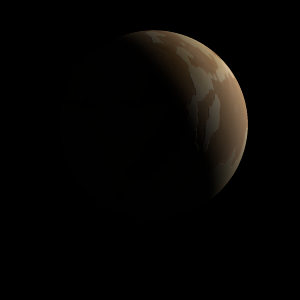|
|
Space Astro
|
Info for exoplanet "Yangmwail"
| Scientific (actual) data |
|---|
| Name | K2-26 b |
| Planet status | Confirmed |
| Radius | 0.238 |
| Orbital period | 14.5665 |
| Semi major axis | 0.0962 |
| Inclination | 88.4 |
| Discovered | 2016 |
| Updated | 2021-02-05 |
| Tconj | 2456780 |
| Tzero tr | 2457170 |
| Impact parameter | 0.57 |
| Temperature (kelvin) | 430 |
| Publication | Published in a refereed paper |
| Detection type | Primary Transit |
| Radius measurement type | Primary Transit |
| Alternate names | EPIC 202083828 b, 2MASS J06164957+2435470 b, EPIC 202083828.01, WISE J061649.55+243545.5 b |
| Star name | K2-26 |
| Right ascension | 94.21° |
| Declination | 24.6° |
| Mag v | 13 |
| Mag j | 11.35 |
| Mag h | 10.762 |
| Star distance | 99.33 |
| Star metallicity | -0.13 |
| Star mass | 0.56 |
| Star radius | 0.52 |
| Star sp type | M1.0 V |
| Star age | 1 |
| Star temperature | 3785 |
| Star alternate names | 2MASS J06164957+2435470, EPIC 202083828, WISE J061649.55+243545.5 |
| Wikipedia article | K2-26 b |
Back
| |
| Fictional info (?) |
|---|
| Suggested name | Yangmwail |
| Planet type | Terrestrial |
| Its orbital period around K2-26 of 15 earth days is the shortest of all the planets in its solar system.
Because of its rapid rotation, the planet's shape is that of an oblate spheroid (it has a slight but noticeable bulge around the equator). |
| Atmosphere | Hydrogen chloride | 28% |
| Krypton | 27% |
| Sulfur dioxide | 23% |
| Carbon monoxide | 21% |
| Formaldehyde | 0.83% |
| Neon | 0.031% |
| Molecular hydrogen | 0.002% |
| Atmospheric pressure | 0.01 bar |
 |
| No known satellites |
| Google search for Yangmwail |
|
Website by Joachim Michaelis
|
|
|
|